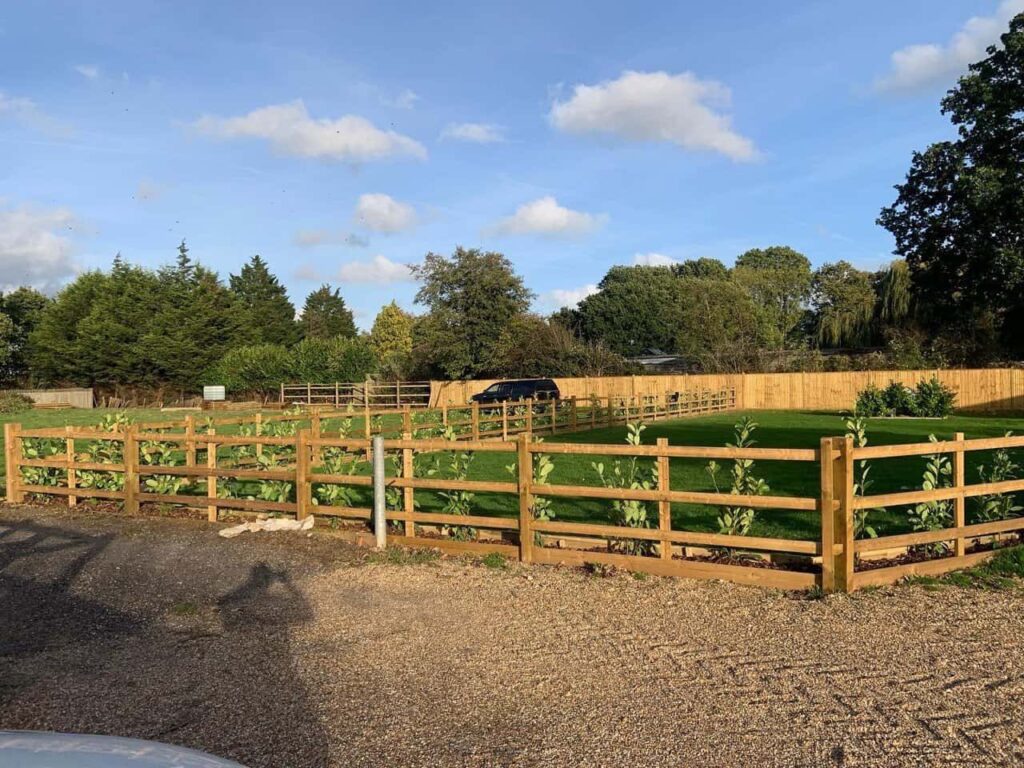Should You Paint a New Fence Immediately After Installation?
Introduction
A new fence adds instant appeal, structure, and privacy to your garden—but what comes next? Many homeowners in Waterbeach and the wider Cambridge area are keen to enhance their fence’s appearance or match it to their landscaping. Naturally, the first thought is often to grab a brush and give it a coat of paint. But is that the right move straight after installation?
At Fast Fix Fencing Waterbeach, we’re regularly asked this question. While painting your new fence can protect and personalise it, timing is everything. Applying paint too soon can cause more harm than good, potentially shortening your fence’s lifespan and leading to maintenance issues down the line. In this article, we explore when and how to paint a new fence—so you get the best results that last.
Key Takeaways
- Painting too early can trap moisture in the wood, causing damage.
- New fences often need time to weather before painting or staining.
- The type of timber used (treated or untreated) affects drying time.
- Weather conditions matter—paint during dry, mild weather for best adhesion.
- Proper preparation ensures a longer-lasting, better-looking finish.
Why Not Paint Immediately?
It may be tempting to paint a freshly installed fence straight away, but there are several reasons to hold off:
1. Moisture Content in New Timber
Newly installed fences—particularly those made from pressure-treated timber—often contain a significant amount of moisture. This moisture helps the wood resist rot and insect damage, but it also makes the timber unsuitable for immediate painting. Paint applied too early can trap moisture inside, leading to peeling, flaking, and even fungal growth over time.
2. Surface Condition
Fresh timber has natural resins and treatment residues that can prevent paint or stain from adhering properly. Waiting allows the wood to “weather” slightly—enough for these residues to break down without compromising the structure. This improves both the finish and the longevity of any treatment you apply.
How Long Should You Wait?
The ideal waiting period depends on the type of wood used and the weather conditions:
- Pressure-treated wood: Wait at least 4 to 6 weeks, sometimes up to 3 months in cooler or damper climates.
- Untreated or kiln-dried wood: May be ready to paint sooner, typically within a couple of weeks, depending on moisture content.
A simple test: sprinkle water on the surface. If it beads up, the wood is still too moist. If it soaks in quickly, it’s ready for treatment.
Choosing the Right Finish
When the time is right, choosing the right paint or stain is just as important as when you apply it. Consider:
- Stains: Penetrate the wood and allow it to breathe. Ideal for a more natural look and long-term protection.
- Paints: Offer bold colour and solid coverage, but may peel over time if not properly applied to dry, weathered wood.
Make sure you select a high-quality, exterior-grade product designed specifically for fencing.
Tips for Best Results
To ensure your new fence looks great and lasts:
- Clean the surface: Remove any dirt, mould, or green residue before applying any treatment.
- Allow proper drying time between coats: Follow manufacturer guidance for drying and re-coating.
- Use brushes or rollers for even application, or consider a sprayer for large areas.
- Paint in dry, mild weather: Avoid direct sunlight or wet days to prevent poor adhesion and patchiness.
Professional Advice Pays Off
If you’re unsure whether your fence is ready to paint, or which product to use, it’s always worth getting expert advice. At Fast Fix Fencing Waterbeach, we’re happy to assess your fence and guide you through the best aftercare process—ensuring it looks its best and lasts for years to come.
Conclusion
Painting a new fence can elevate its appearance and extend its life—but only if done at the right time and with the right products. Rushing into it immediately after installation can cause more harm than good, especially with pressure-treated timber.
By giving your fence time to weather and following professional advice, you’ll get a longer-lasting, more attractive result that adds real value to your outdoor space. For expert fencing services and honest, practical guidance in Waterbeach and throughout Cambridge, contact Fast Fix Fencing Waterbeach today—we’re here to help you get it right from day one.
Call us on: 01223 912 296
Click here to find out more about Fast Fix Fencing Waterbeach
Click here to complete our contact form and see how we can help with your fencing needs.

